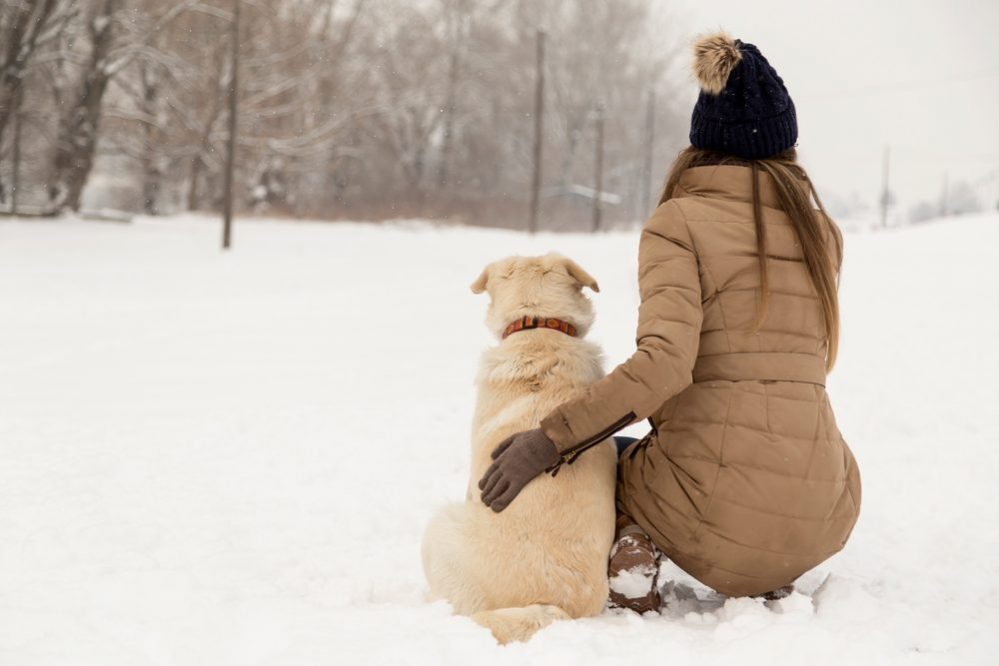There’s nothing like romping with your dog in the first snowfall of the season. Just be sure to keep these safety tips in mind!
Few things are more peaceful and invigorating than hiking, snowshoeing or skiing through an unspoiled winter wilderness. Sharing these experiences with your dog makes it even better. But depending on where you live or are traveling to, frostbite can be a hazard, and poor visibility during snowstorms can cause disorientation. Here’s how to enjoy winter outdoors while keeping yourself and your dog safe.
1. Keep him close
Don’t let your dog wander off without you, especially in the mountains or near frozen bodies of water. If your dog obeys you perfectly, you can allow him to play off leash. Otherwise, equip him with a good harness and leash.
2. Know your dog’s limitations
Not all breeds are suited for long treks in the cold and snow. Small dogs, those with thin coats, or those prone to respiratory issues, should stay home on severe days.
3. Use caution in deep snow
If you’re snowshoeing or skiing and your dog is running, remember that you’re gliding across the top of the snow while he’s sinking in with every step. He’s getting twice as much exercise as you, so by the time you’re feeling tired, he may be truly exhausted. Snow that’s too deep can even result in injury.
4. Take regular water breaks
Make sure your dog stays hydrated by bringing along extra water and a collapsible dog bowl. A lot of people think dogs can just eat snow, but snow does not have a high water content, and often doesn’t give them the hydration they need.
5. Bring snacks
In addition to water, take along some food or good quality treats. They’ll come in handy if you get lost, or need an extra boost of energy.
6. Use the buddy system
If you are venturing into potentially dangerous territory, don’t go alone. Take a friend or two, and always have a mobile communication device so you can call for outside help if needed. Keep in mind that cell phones may not work in mountainous or remote regions.
7. Dress accordingly
Ensure you’re wearing proper winter gear, and consider your dog’s comfort as well. Breeds that don’t have a thick wolf-like coat are not prepared by nature for cold temperatures, so consider investing in a good set of quality doggie boots and a weatherproof coat.
8. Consider leaving him at home
If the snow is too deep or the air is too cold, consider leaving your dog at home. Yes, he’ll be eager to go with you, but you need to ask yourself this question: “If he becomes too exhausted, will I be able to get him home safely?”
By taking steps to protect yourself and your dog, you can safely enjoy the peace and beauty that winter has to offer, no matter where you are.
[pro_ad_display_adzone id=”34071″]








